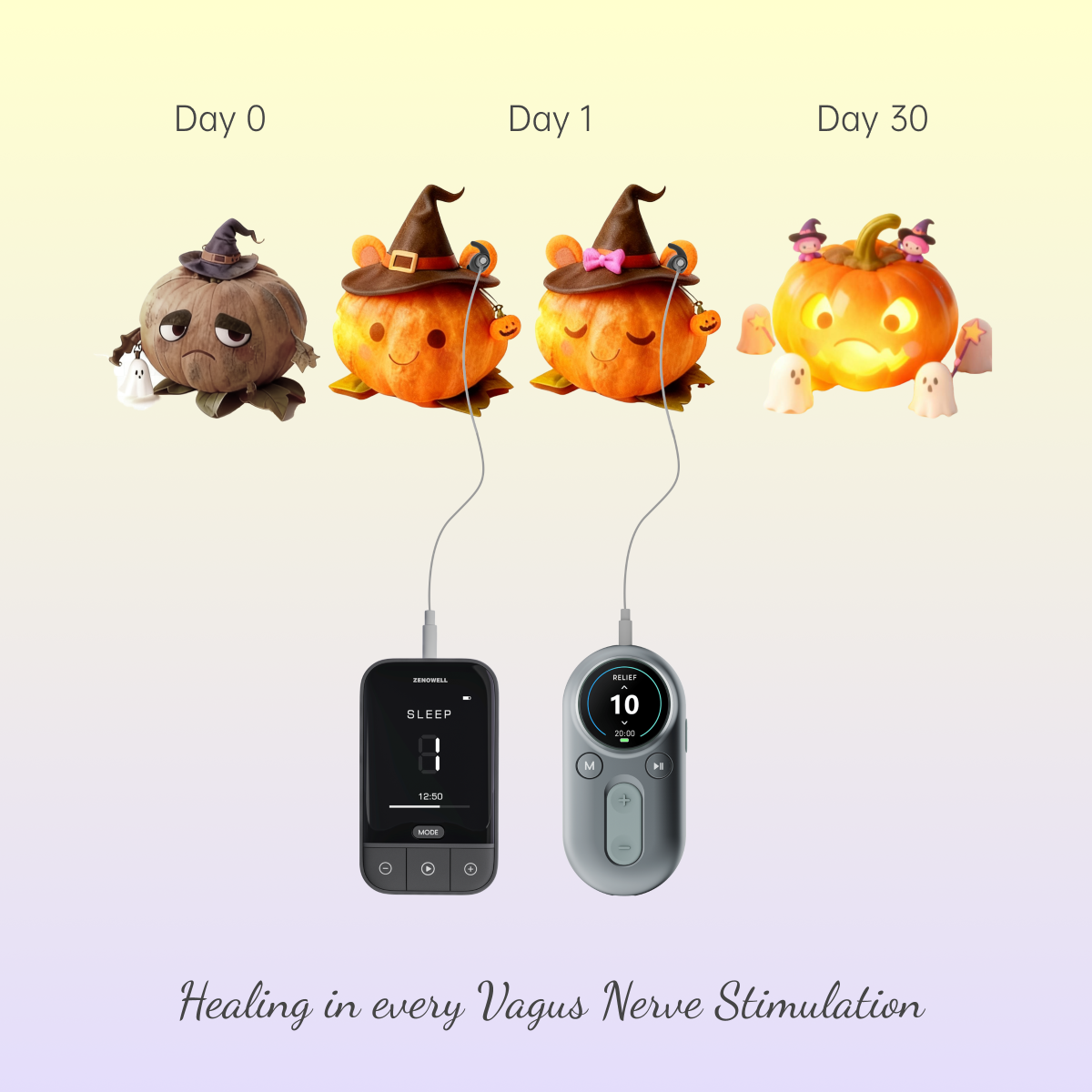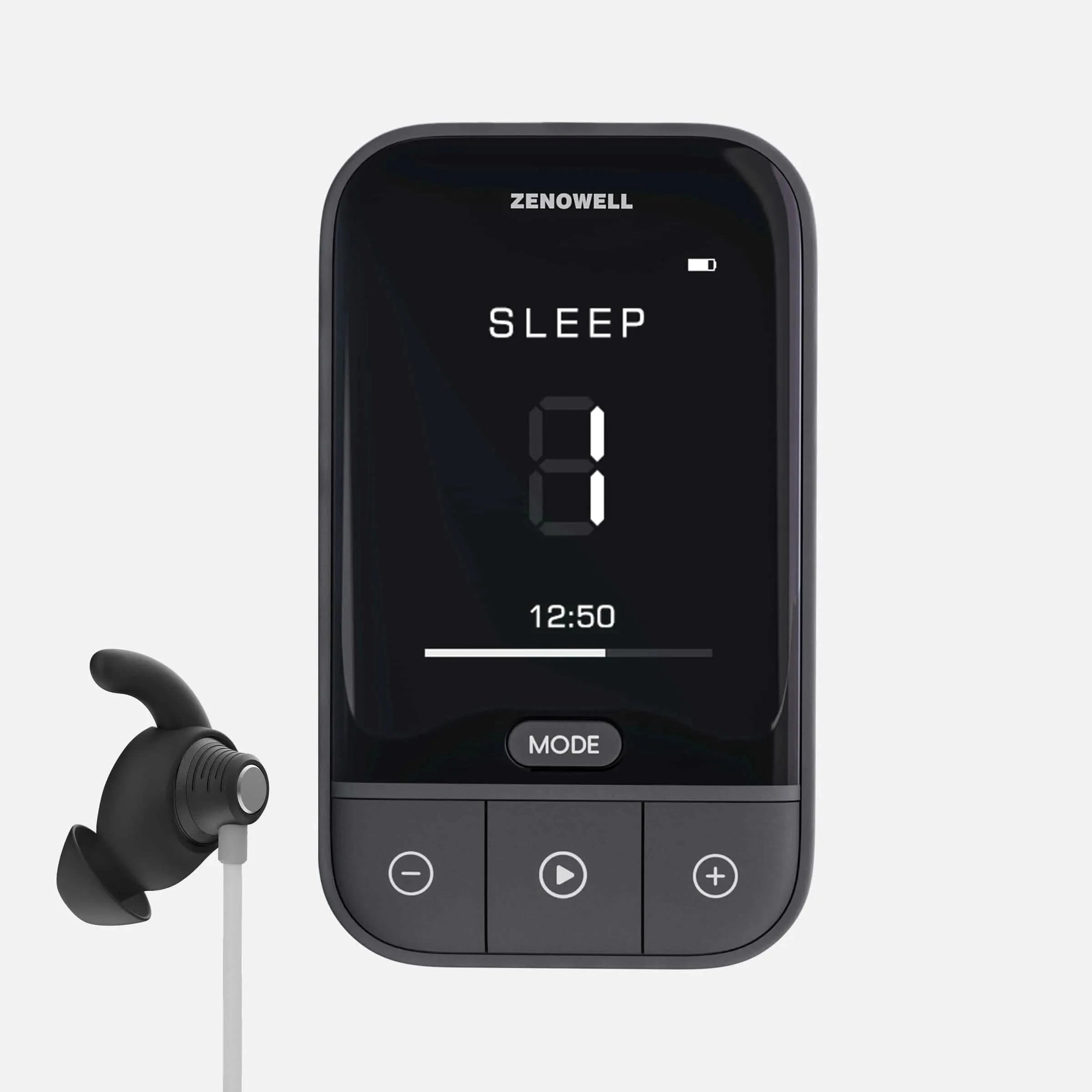Warum stimuliert ZenoWELL taVNS die Bereiche Concha Cavum und Concha Cymba?
Die transkutane aurikuläre Vagusnervstimulation (taVNS) ist eine nicht-invasive Neuromodulationstechnologie. Durch elektrische Stimulation des aurikulären Vagusnervs (ABVN) an der Ohroberfläche kann taVNS sowohl das autonome als auch das zentrale Nervensystem regulieren. Das ZenoWELL taVNS-Gerät zielt hauptsächlich aus zwei Gründen auf die Bereiche Concha Cavum und Concha Cymba ab, wie anatomische und bildgebende Untersuchungen belegen.
Erstens basiert das Design des ZenoWELL taVNS-Ohrstücks auf der anatomischen Verteilung des ABVN. Die Concha cymba wird ausschließlich vom ABVN innerviert (100 % Dominanz) , während andere Ohrregionen unterschiedlich starke ABVN-Innervation aufweisen: Anthelix (73 %), Concha cavum (45 %), Tragus (45 %), Crus helixe (20 %) und Crura anthelixe (9 %) [1,2]. Diese anatomischen Belege machen die Concha cymba zu unserem primären Zielbereich. Die Ingenieure von ZenoWELL haben anschließend die Geometrie des Ohrstücks so gestaltet, dass sie der Topografie der Concha cymba entspricht. Um Benutzerkomfort, Bequemlichkeit und Stabilität unter Beibehaltung ergonomischer Prinzipien zu optimieren, haben wir den Stimulationsbereich um die Concha cavum erweitert und so den für eine wirksame Stimulation erforderlichen Stromkreis geschlossen.
Zweitens wurde unser Design empirisch durch bildgebende Daten aus früheren Studien validiert. Bildgebende Untersuchungen mittels fMRT und EEG haben gezeigt, dass die Stimulation der Concha cavum die Aktivität in den vagalen afferenten Kernen des Hirnstamms moduliert[3]. Darüber hinaus löste die gleichzeitige Stimulation von Concha cavum und Concha cymba signifikant stärkere somatosensorisch evozierte Vaguspotentiale (VSEP) aus als die Stimulation eines der beiden Bereiche allein[4].

Basierend auf diesen Überlegungen haben wir den Ohrhörer mit zwei Stimulationspunkten für die Concha cavum und die Concha cymba entwickelt. Angesichts der erheblichen anatomischen Unterschiede in der Ohrmorphologie verschiedener Bevölkerungsgruppen ist ein universelles Design unzureichend. Um diesem Problem entgegenzuwirken, haben wir eine adaptive Silikonhülle entwickelt, die sich an unterschiedliche Ohrgrößen anpasst. Die Weichheit und Leitfähigkeit des Materials wurden präzise kalibriert, um sich der Ohrmuscheltopographie anzupassen und gleichzeitig optimalen Oberflächenkontakt zu gewährleisten. Dies gewährleistet eine gleichbleibende Stimulationseffizienz.
Referenz
- Peuker ET, Filler T J. Die Nervenversorgung der menschlichen Ohrmuschel[J]. Clinical Anatomy, 2002, 15(1): 35-37.
- Wang Y, Li SY, Wang D, et al. Transkutane Stimulation des Vagusnervs: vom Konzept zur Anwendung[J]. Neuroscience Bulletin, 2021, 37: 853-862.
- Borgmann D, Rigoux L, Kuzmanovic B, et al. Modulation von fMRI-Hirnstammreaktionen durch transkutane Vagusnervstimulation[J]. Neuroimage, 2021, 244: 118566.
- Butt MF, Albusoda A, Farmer AD, et al. Die anatomischen Grundlagen der transkutanen Stimulation des Vagusnervs am Ohr[J]. Journal of Anatomy, 2020, 236(4): 588-611.
















